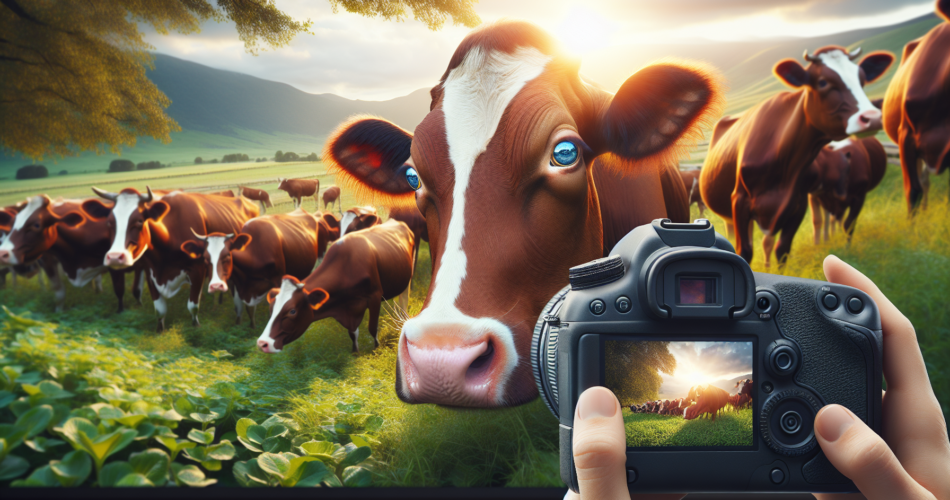Cows are often seen as gentle giants grazing peacefully in fields, but their remarkable anatomy contributes significantly to their survival. One of the most fascinating aspects of their physiology is the positioning of their eyes. Positioned on the sides of their heads, cows possess a unique eye placement that offers them nearly complete visual coverage of their surroundings. This article delves into the benefits of this distinctive eye positioning and explains how cows achieve such an extensive field of vision.
Exploring the Benefits of Cows’ Distinctive Eye Positioning
Cows are prey animals, and their eye placement plays a crucial role in their ability to detect predators. With their eyes located laterally, cows can benefit from an expansive peripheral vision. This adaptation allows them to spot potential threats from various angles without having to turn their heads, a critical feature for survival in the wild. The wide field of view permits them to remain alert to dangers while foraging, reducing the risk of becoming an easy target for predators.
In addition to enhancing safety, the unique positioning of their eyes also aids in social interactions within herds. Cows are social creatures, often forming close-knit groups. The lateral placement of their eyes enables them to maintain awareness of other herd members, facilitating communication and coordination while grazing or moving. This advantage is vital for maintaining social bonds and ensuring the collective safety of the herd. Consequently, the eye positioning supports both individual and group survival strategies in the unpredictable dynamics of their environment.
Moreover, cows’ eyes are adapted to see well in low-light conditions, a benefit that complements their broad field of vision. Their eyes contain a higher number of rod cells, which are more sensitive to light and movement than cone cells. This adaptation allows cows to navigate effectively during dawn and dusk when many predators are also active. Therefore, the combination of wide peripheral vision and superior low-light capabilities equips cows with the necessary tools to thrive in varied environments.
How Cows Achieve Near-360 Degree Vision in Their Environment
The near-360 degree vision of cows is not only a result of their eye placement but also due to the structure of their eyes and the way their brains process visual information. Each eye captures a different image; however, the brain combines these images to create a comprehensive visual field. This binocular vision provides depth perception and helps cows judge distances accurately, which is crucial for navigating their surroundings, particularly when moving through varied terrains.
Moreover, the placement of the cow’s eyes allows for an overlap in vision, albeit minimal, which further assists in depth perception. While their primary advantage lies in peripheral awareness, the slight overlap still enables them to focus on objects directly in front or behind them. This ability to perceive depth combined with extensive peripheral awareness allows cows to navigate obstacles effectively, find food, and avoid dangers, all of which are vital for their survival.
Interestingly, cows have a blind spot directly in front of their noses and directly behind them. However, their ability to turn their heads and necks significantly mitigates this limitation. Cows can pivot their heads to scan their surroundings, compensating for any blind spots, thus ensuring they remain vigilant. This combination of anatomical features and behavioral adaptations culminates in a highly effective visual system that supports their daily activities and enhances their overall well-being.
In conclusion, the unique eye placement of cows provides them with an incredible advantage in their natural habitats. This distinctive anatomy not only enhances their ability to detect predators but also facilitates social interactions within herds and improves their navigation skills. Understanding the mechanics of cows’ vision reveals the intricacies of their adaptations and highlights the remarkable ways in which they have evolved to thrive in their environments. As we continue to study and appreciate these gentle giants, it becomes clear that their vision is as vital to their survival as any other aspect of their biology.

